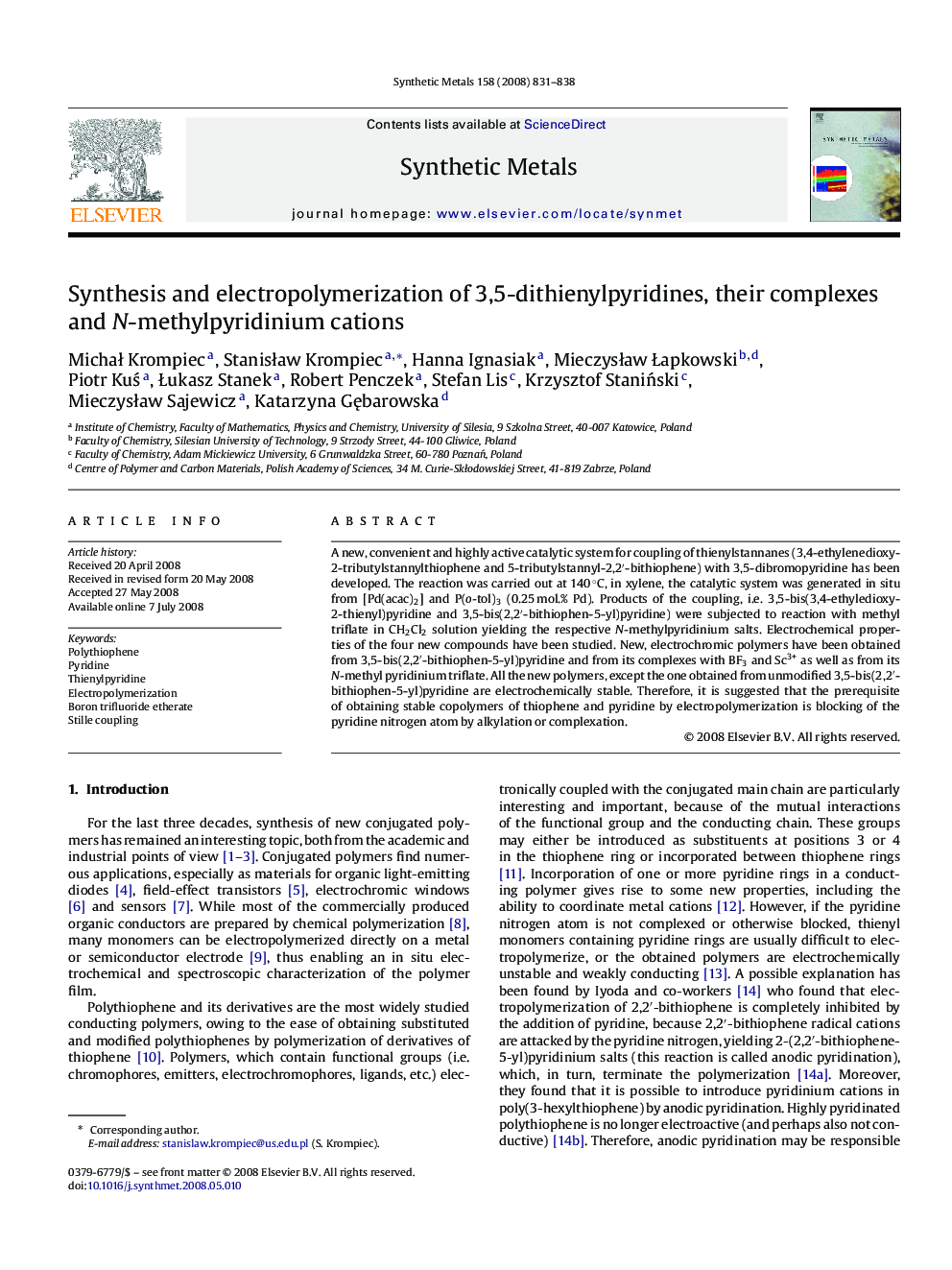| Article ID | Journal | Published Year | Pages | File Type |
|---|---|---|---|---|
| 1443758 | Synthetic Metals | 2008 | 8 Pages |
A new, convenient and highly active catalytic system for coupling of thienylstannanes (3,4-ethylenedioxy-2-tributylstannylthiophene and 5-tributylstannyl-2,2′-bithiophene) with 3,5-dibromopyridine has been developed. The reaction was carried out at 140 °C, in xylene, the catalytic system was generated in situ from [Pd(acac)2] and P(o-tol)3 (0.25 mol.% Pd). Products of the coupling, i.e. 3,5-bis(3,4-ethyledioxy-2-thienyl)pyridine and 3,5-bis(2,2′-bithiophen-5-yl)pyridine) were subjected to reaction with methyl triflate in CH2Cl2 solution yielding the respective N-methylpyridinium salts. Electrochemical properties of the four new compounds have been studied. New, electrochromic polymers have been obtained from 3,5-bis(2,2′-bithiophen-5-yl)pyridine and from its complexes with BF3 and Sc3+ as well as from its N-methyl pyridinium triflate. All the new polymers, except the one obtained from unmodified 3,5-bis(2,2′-bithiophen-5-yl)pyridine are electrochemically stable. Therefore, it is suggested that the prerequisite of obtaining stable copolymers of thiophene and pyridine by electropolymerization is blocking of the pyridine nitrogen atom by alkylation or complexation.
Graphical abstractFigure optionsDownload full-size imageDownload as PowerPoint slide
